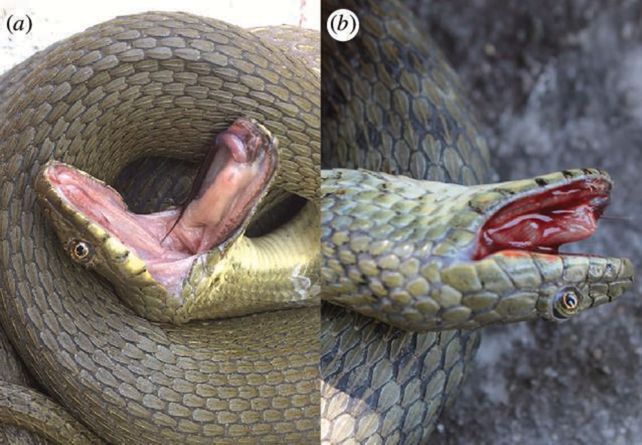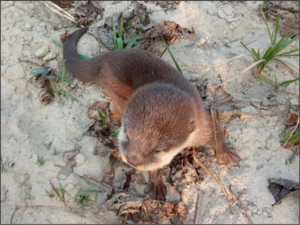A number of species will play dead to avoid predators, but dice snakes have taken this to another level. Going far beyond the normal strategy of staying motionless, they put great detail into faking their own gory deaths.
To add flair to their act, the snakes cover themselves in their own feces and musk. They also bleed from their mouths and lie dead still with their mouths wide open. This may suggest to predators that they are a rotting corpse rather than a fresh meal. These gruesome theatrics look incredibly realistic.
Tonic immobility –- the scientific name for pretending to be dead — occurs across the animal kingdom. But it is hard to tell how effective this defense mechanism actually is. Its commonness suggests it works relatively well, but it is a risky method. The animal becomes completely vulnerable to the predator.
Some researchers think that the animals do this in a desperate last attempt to stay alive. Others say it is a completely unconscious response.
Primitive response
“One theory is that it is the ‘most primitive’ defense response, similar to freezing in a high-stress situation,” co-author Vukasin Bjelica told CNN.

Dice snake. Photo: Shutterstock
A new study states that the dice snake’s dramatic touches increase its chances of survival. Intrigued by their showy performance, researchers wanted to see exactly how this mechanism works in the wild. Dice snakes live throughout Europe, North Africa, Asia, and the Middle East. This study took place in Macedonia. To mimic the response to predators, the researchers sneaked up on the unsuspecting snakes and tried to grab them.
The team grabbed 263 of the nonvenomous dice snakes. Then, they began stretching and pinching them around their stomachs to try to mimic the grip of a predator. They then released the snakes on their backs and watched their reactions. Of all the snakes, 124 covered themselves in feces and musk, and 28 began oozing blood from their mouths. Eleven snakes did all three.
The researchers also noticed a difference between the timings of the snakes who did and did not cover themselves in bodily fluids. The snakes that only lay motionless did so for around 40 seconds. The more histrionic snakes put on their show and tried to escape two seconds earlier.
“Two seconds might not be a lot but can be just enough for a snake to mount an escape if the predator backs away,” co-author Vukasin Bjelica told Science News. “Even the smallest chance can make a difference in being eaten or not.”






